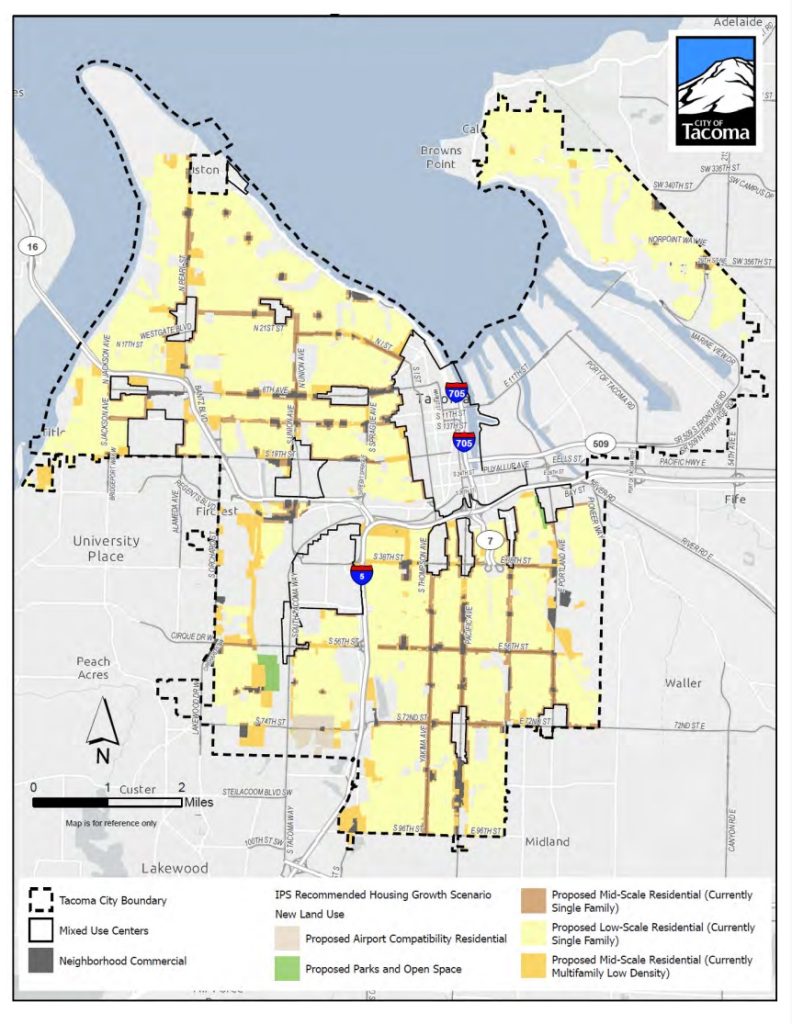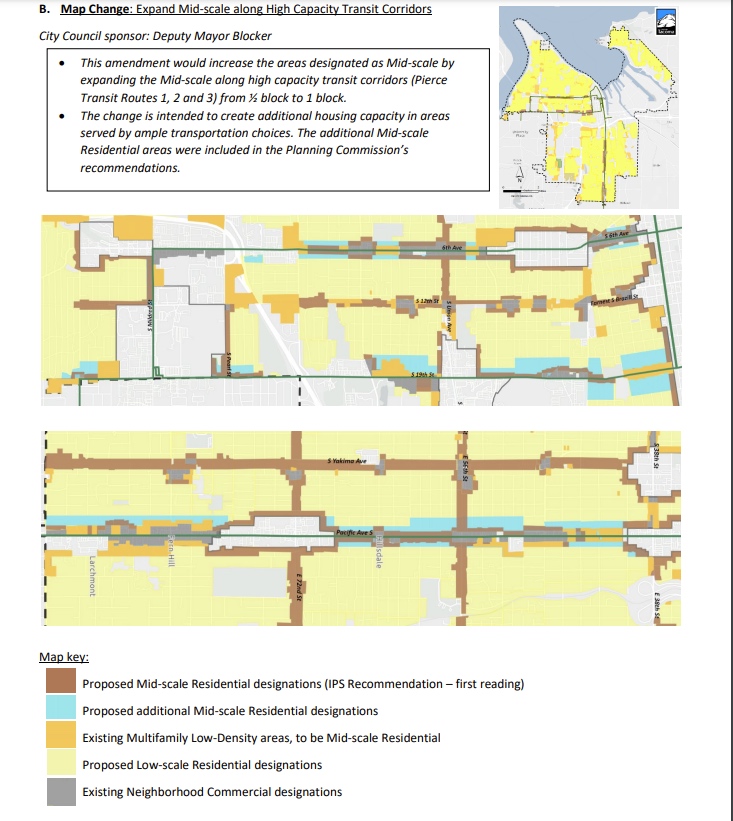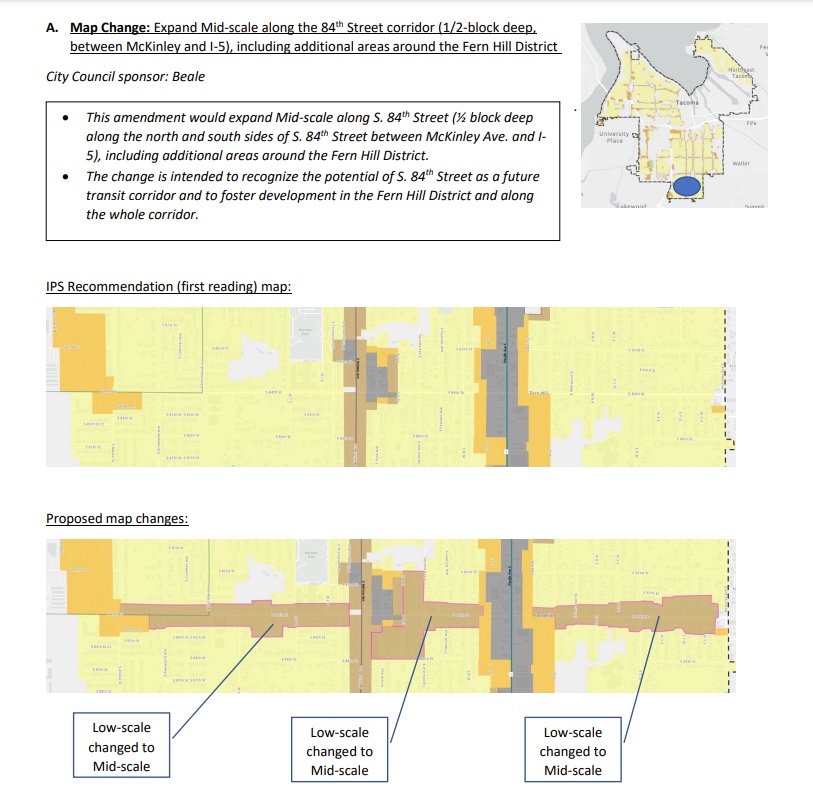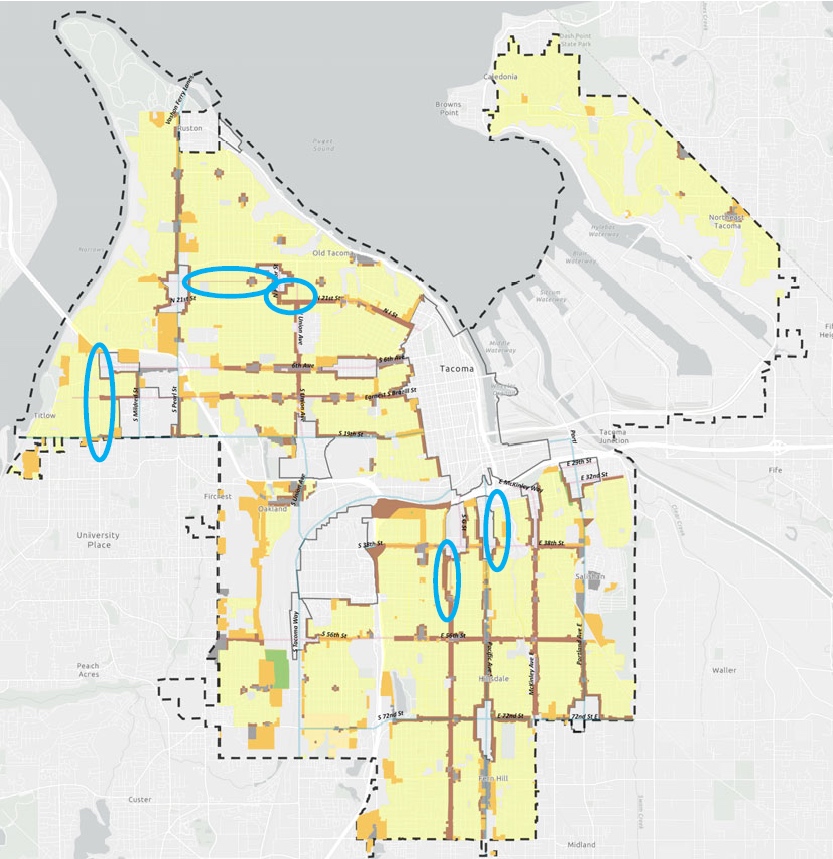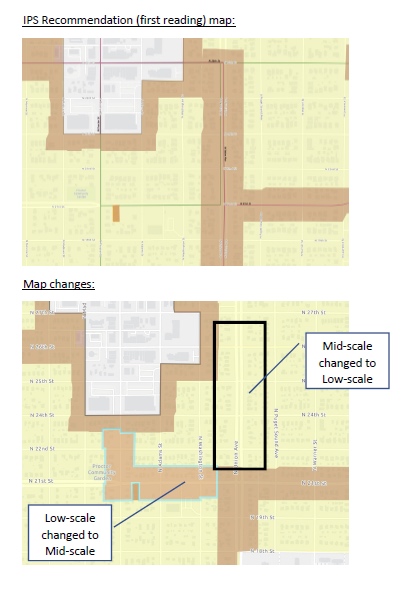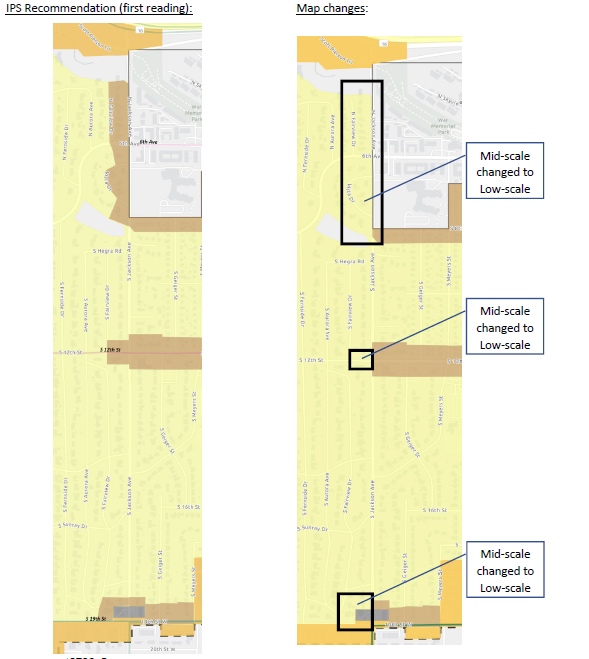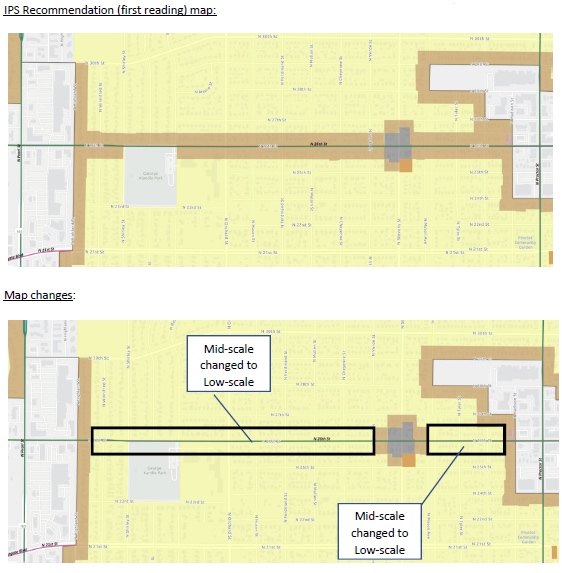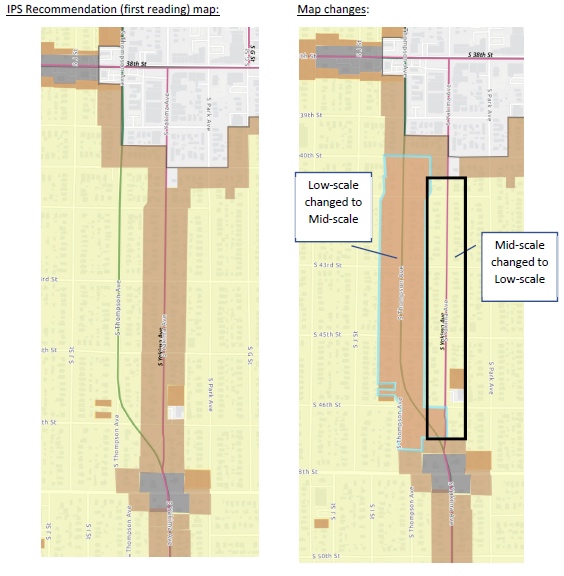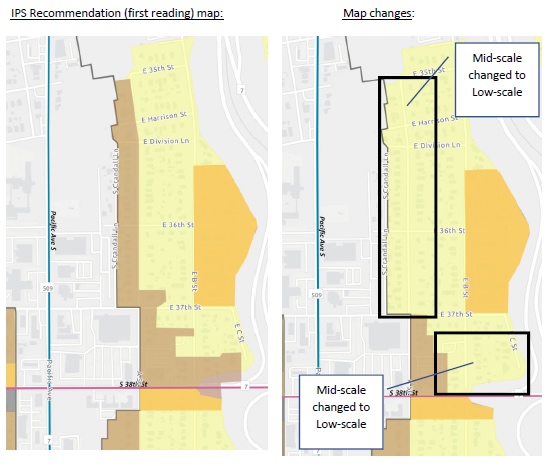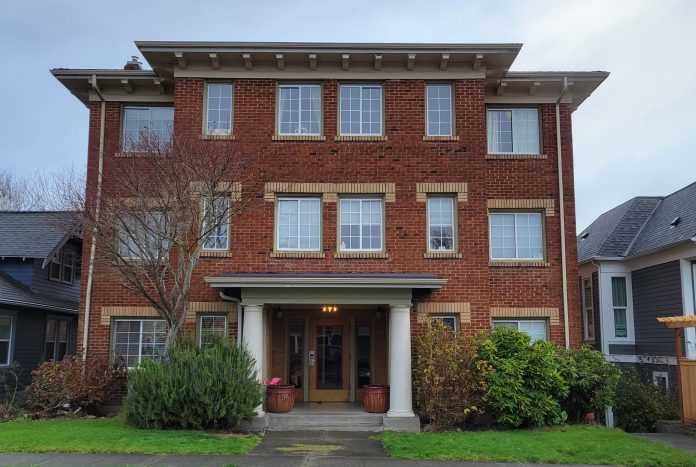
Home in Tacoma finally reached a milestone this week that was months in the making. Unfortunately, by the time the affordable housing initiative was passed by the City Council, it had been significantly pared down in comparison to earlier plans. Let’s take a closer look at where Home in Tacoma stands now and how the ordinance was changed before its passage.
As a reminder, Home in Tacoma gives single household homes the opportunity to build add-on units or renovate to accommodate more residents. It also provides flexibility around building small multi-unit dwellings. As part of these changes, single family zones will be renamed Low-Scale Residential zones. In general, the zone allows for the construction of detached houses, duplexes, triplexes, and cottage housing. In some cases, fourplexes and small multifamily buildings will be allowed as well. New housing must maintain the general scale (size, width, and height) of existing detached houses with yards.
The initiative also creates a new component, Mid-Scale Residential zones, which allow duplexes and all the way up to small apartment buildings that can be three stories tall (or four, in some cases) to be more easily built along transit corridors and near business centers. The original proposal contained scenarios to rezone 25% or 40% of Tacoma’s residential land to Mid-Scale. This ambitious proposal to add housing to a growing city was cut down to about 17.5% as a result of the backlash captured in a barrage of public comments. And that’s not the end of it.
Shifts, Cuts, Changes
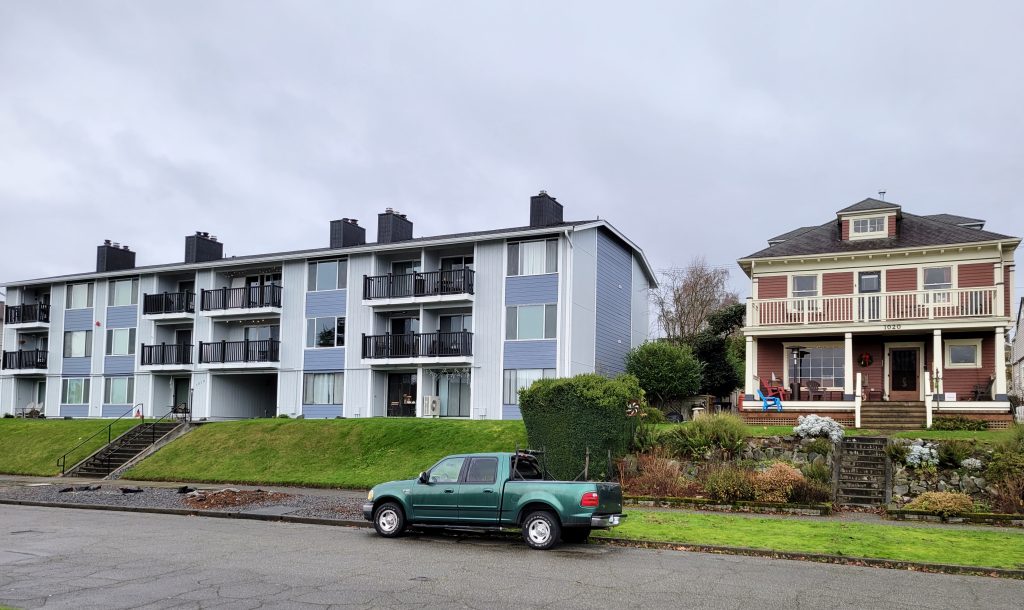
Back on November 23rd, a City Council session was held to discuss potential changes to the Home in Tacoma plan. Council members took feedback from their constituents and public comments to share a number of adjustments to both the map and text of the ordinance.
Of the ten proposed map changes, eight either shifted the locations of specific Mid-Scale designations or downgraded them to Low-Scale. The remaining two deviated from this pattern: Deputy Mayor Keith Blocker sought to widen Mid-Scale designations along high-capacity transit corridors along 6th Avenue, 19th Street, and Pacific Avenue from half a block to a full block and Councilmember Chris Beale wanted to designate more parcels as Mid-Scale along 84th Street in the Fern Hill neighborhood.
These proposed map changes are admittedly disappointing. Only two of the ten sought to increase density and expand Mid-Scale Residential areas, and only in very specific locations. The rest just kept paring the Home in Tacoma Plan down to a shell of its former self. When the Council took public comments during their December 7th meeting, one person posed the thought, “When will Tacoma grow up?” Though not referring to these specific map changes, the sentiment is still the same. How will Tacoma be able to grow if the pathways are being denied and chipped away at? Spoiler alert: Blocker and Beale’s proposals including Mid-Scale zoning did not make it into the final amendment package.
Multiple text changes were also included in the discussion on November 23rd. Councilmember Robert Thoms brought forth a change to cap Low-Scale residential density at 15 units per acre, larger than the City Comprehensive Plan’s target of 6 to 12 dwellings per acre and on the lower end of the current plan’s target of 10 to 25 units. Councilmember Catherine Ushka recognized that neighborhoods in the East Side and South End did not receive the same view analysis (think lines of sight from different points in your neighborhood or dwelling) that other neighborhoods received and added text to rectify that and allow map changes pending the results of analysis. Ushka also added text clarifying that single-family detached homes did conform with the new Low-Scale and Mid-Scale standards. Finally, Councilmember Kristina Walker added a change discouraging demolition of housing in historic neighborhoods.
Aside from the density limit, these text changes seem more promising. They appear to seek more equitable action for communities while easing some other concerns around existing homes and the cohesiveness of neighborhoods, which may drive public support. But the density limit is a sticking point, as it inhibits larger developments from getting established to accommodate the rapidly growing population years from now. Perhaps there should be a provision allowing the density limit to be increased citywide or by locality as needed?
Bits and Bolts
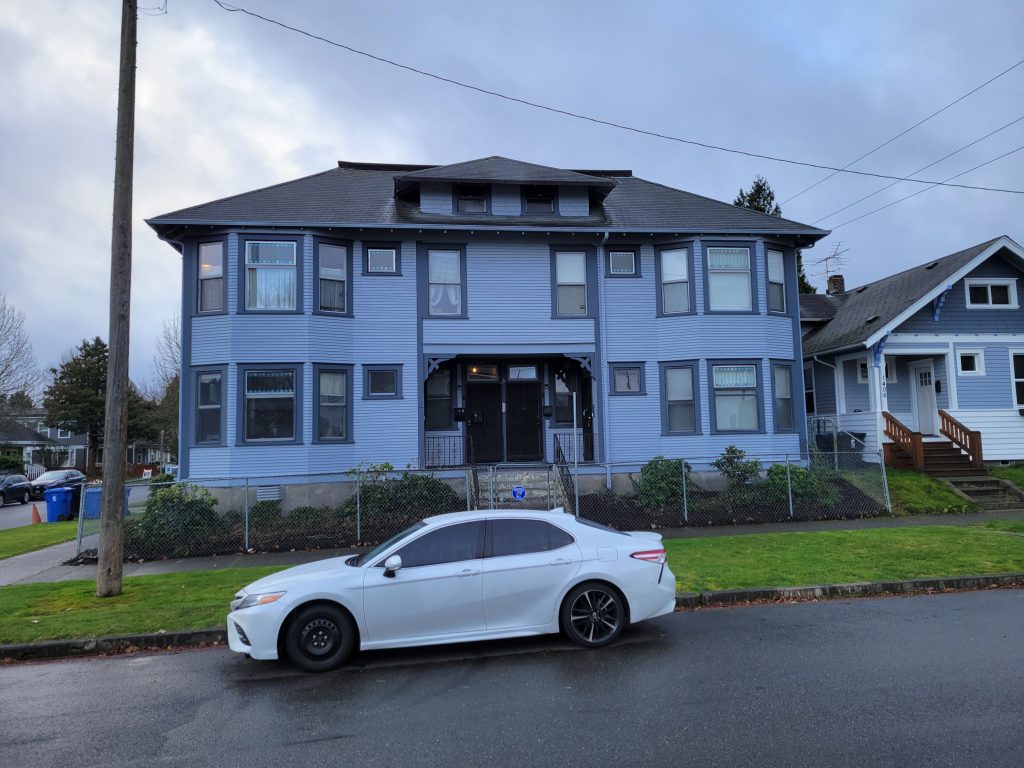
In a meeting on December 1st, these proposed changes were discussed and ultimately five map changes and all text changes were bundled into a single amendment package. The amendment package was once again overviewed on December 7th, and alongside the final text of the ordinance, was passed by the Council. The text changes include:
- Added language that as part of Phase Two, a view study shall be done, in particular to examine areas that have not previously received view analysis and/or protections in the Eastside and South End;
- Added language to clarify that, as part of Phase Two, map adjustments may be appropriate after additional analysis;
- Added language calling for study of the potential to expand Mid‐scale along the South 84th Street corridor, including additional areas around the Fern Hill District;
- Added language calling for focused effort, as part of Phase Two, to ensure that zoning and standards are consistent with the goals and policies of historic areas including the North Slope Historic District;
- Added language calling for evaluation, as part of Phase Two, of establishing maximum density standards;
- Clarification of the policy intent that zoning should be structured to encourage development in areas that don’t already meet the vision in terms of density targets;
- Added policy language in the Plan to clarify that single‐family detached housing is not nonconforming in both Low‐scale and Mid‐scale areas; and
- Added language regarding Historic Districts, discouraging demolition in Low‐scale areas (in the same manner as in Mid‐scale areas).
During the December 7th meeting, Councilmembers acknowledged (and in some cases shared) the public’s concern regarding Mid-Scale rezoning and sought to address it. Some commenters were worried that their neighborhoods would be upended if a nearby property were redesignated for Mid-Scale development.
But Councilmembers noted multiple times throughout the discussion that all residential land in Tacoma is slated to be redesignated and thus every neighborhood will be affected, whether or not it will become a Mid-Scale zone. Single household homes would conform under the new standards, but they too will evolve with the possible addition of backyard cottages and other accessory dwelling units as new rules are implemented. These changes will come gradually over time.
“We’re not going to all of a sudden going to see four story buildings pop up in our community,” Deputy Mayor Blocker said.
The next step of Home in Tacoma, titled Phase Two, involves working through the smaller details of implementing the plan.
One thing the City has not discussed yet is Home in Tacoma’s cost — or how it will ensure these new developments will actually be affordable beyond the surface level. There also hasn’t been any noticeable discussion around supporting our houseless folks, who would benefit greatly from affordable housing. Finally, there hasn’t been much talk around transit, for instance how the road and transit systems will need to be redesigned and bulked up as the city population adjusts to this new zoning system. Answers will hopefully be made clearer in the coming months as the City prepares to implement the plan.

Kevin Le (Guest Contributor)
Kevin Le is a Geographic Information Science (GIS) master's student at the University of Southern California. He moved to Tacoma a few years to go to UPS and has stuck around ever since. He's interested in how we can use spatial data to understand our urban landscape and build better cities for everyone.


